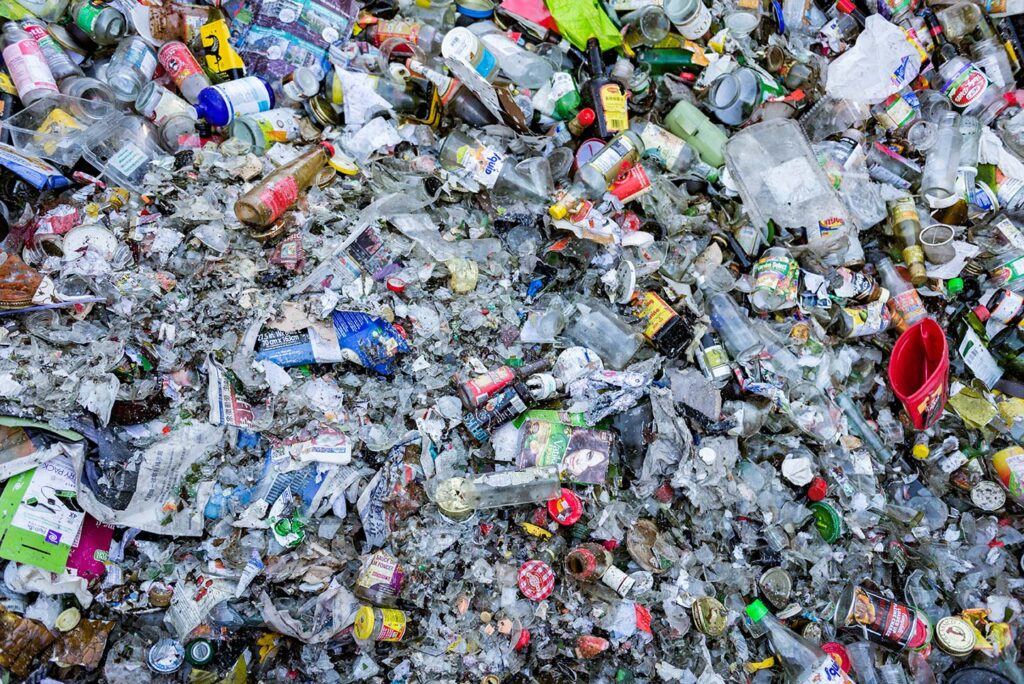Are you unintentionally preventing your recycling from being recycled?
You could be if you are tying your recyclables into plastic bags (such as grocery bags) before placing them in your recycling or nesting different types of containers together (e.g. a metal can inside of a plastic tub). When we receive materials in these ways, they can’t be recycled.
All tied up and nowhere to go
We frequently receive materials that have been sorted and neatly tied into plastic bags. While this might seem like it is helpful, unfortunately, the bags and contents need to be thrown away. For safety reasons, we cannot open the bags once they reach the recycling facility. This is because on more than one occasion, a recycling facility worker has opened a bag that was thought to be filled with recyclables only to be injured by something hidden inside (e.g. needles and sharps).
A common example of material that needs to be contained for collection is shredded paper. The correct way to set out shredded paper is to put in a paper bag or small cardboard box (e.g., shoe box, cereal box) and include that in your paper collection bag, bin, or cart. Containment of shredded paper is important as loose shredded paper can blow away and become litter, or get mixed with container recycling.
Unnecessary nests
Another source of unrecyclable recyclables is nested materials. While stacking containers that held the same contents is okay, metal and plastic containers stacked together are difficult to separate. Similarly, papers stashed inside a cereal or shoe box can’t be separated. Also problematic is shoving any type of materials into a large plastic container. Materials arriving at the recycling facility in any of these ways cannot be recycled and will be sent to disposal.
Loose-y goose-y
Instead of tying recycling in a plastic bag or mixing stacks of containers, following sorting instructions from your recycling provider and throwing materials loose into the recycling bin is the best way to ensure that they’ll be recycled.


